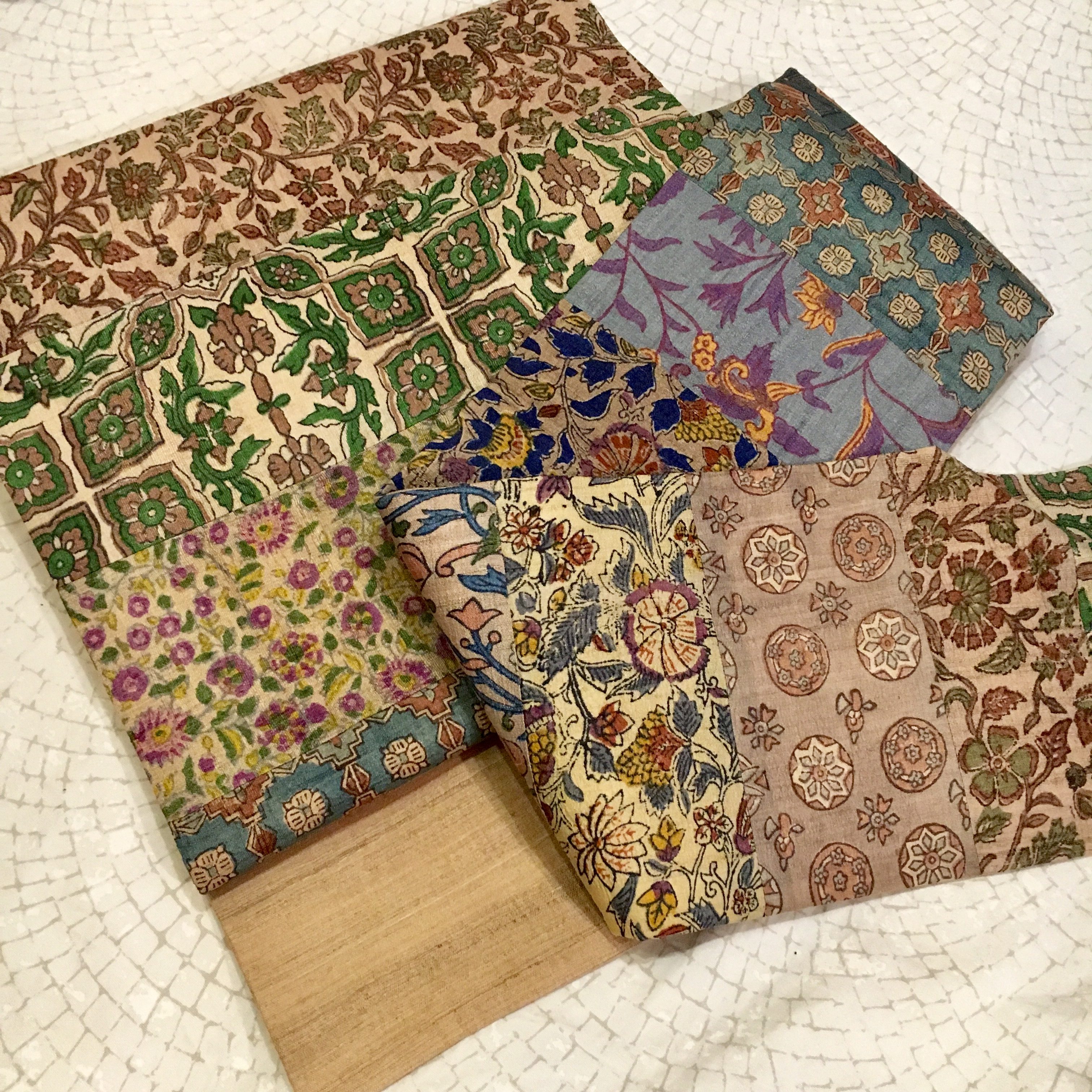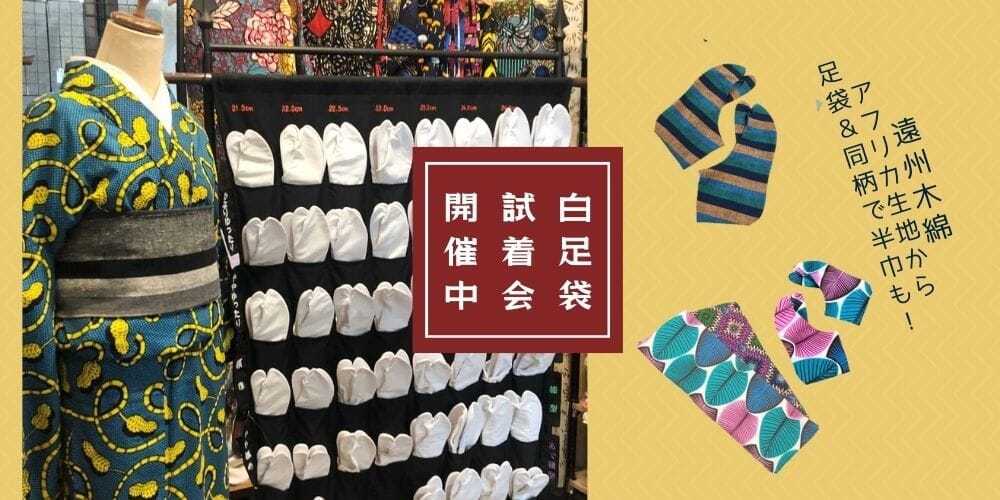2018/11/03 Aizu Kimono Gallery Rin POP UP held! Until 2018/11/11 (Sunday)
Nagoya obi with patchwork of Kowata Sarasa reproduction pattern: 75,000 yen (excluding tax)
Furuwata Sarasa - Reproduction Pattern - Indian chintz that was imported to Japan around the 17th century is called Furuwata Sarasa. The vibrantly colored chintz, dyed using woodblocks in a stamping motion, is full of exotic charm and was highly sought after by feudal lords and tea masters of the time as fabric for tea utensils, and the techniques used at that time have been handed down in India to this day. This product is a modern reproduction of that Furuwata Sarasa, finished in patchwork.
Fabric: Tussah SilkTassah silk is one of the wild silkworms from India. Unlike domestic silkworms, they do not eat mulberry leaves, but rather feed on leaves from the Sara tree. The amount of thread produced is about 2% of that of domestic silkworms. The color is not consistent from cocoon to cocoon, and the naturally occurring light and dark patterns are indescribably beautiful. It goes well with tsumugi.
This time, we have a lot of accessories such as kaishi holders, fukusa holders, tabi holders, and sukiya bags. All the chintz patterns are so attractive that I can't decide on just one! You may be confused, but this obi has many attractive chintz patterns scattered in a patchwork, giving it a variety of expressions. If you have it on hand, you'll definitely find it a hit with Tussar Silk's Nagoya obi, so be sure to check it out in person at our store.








